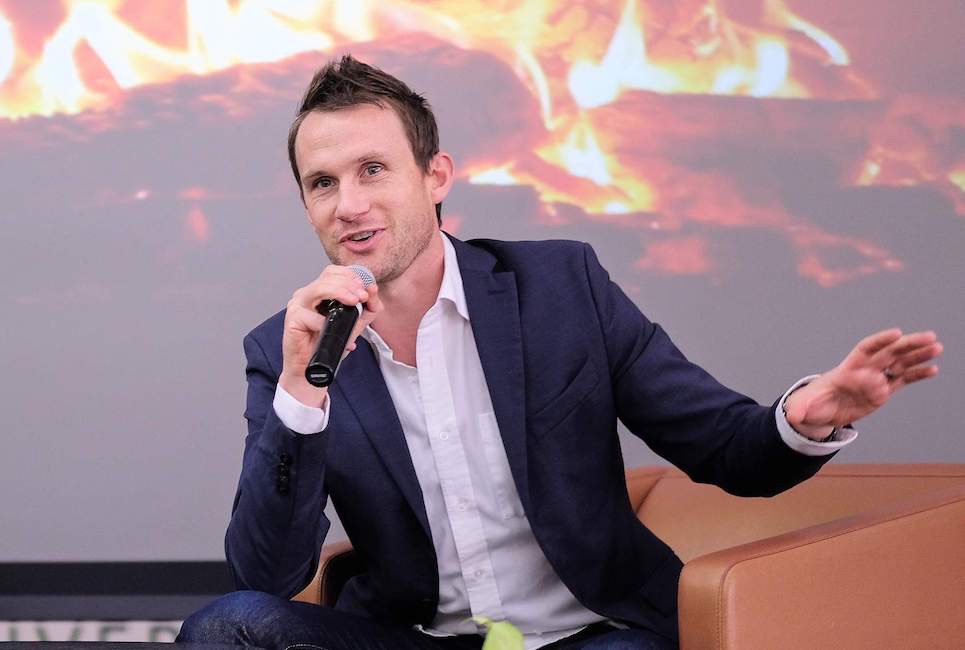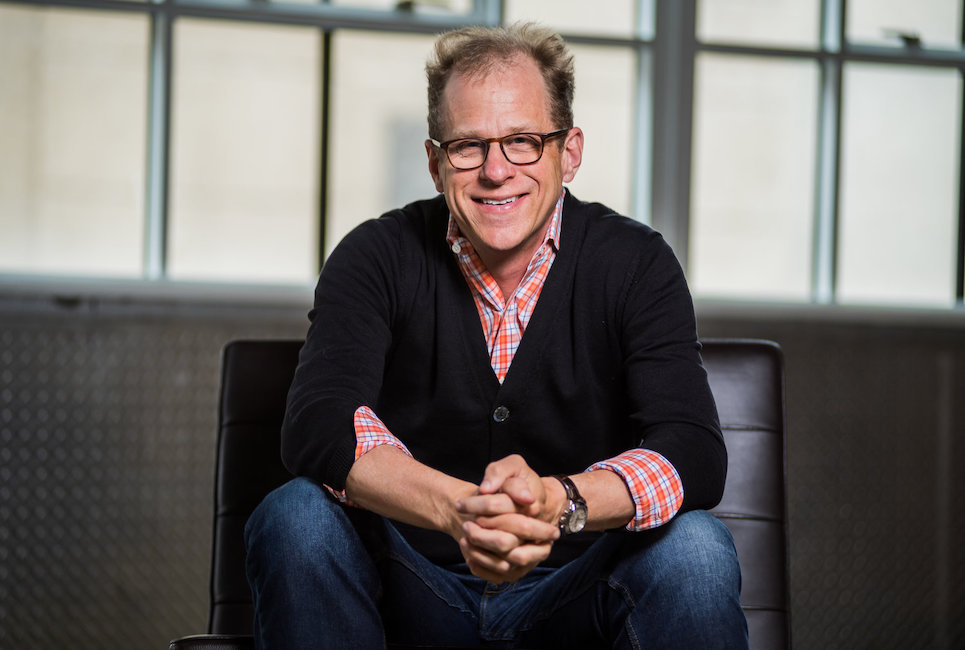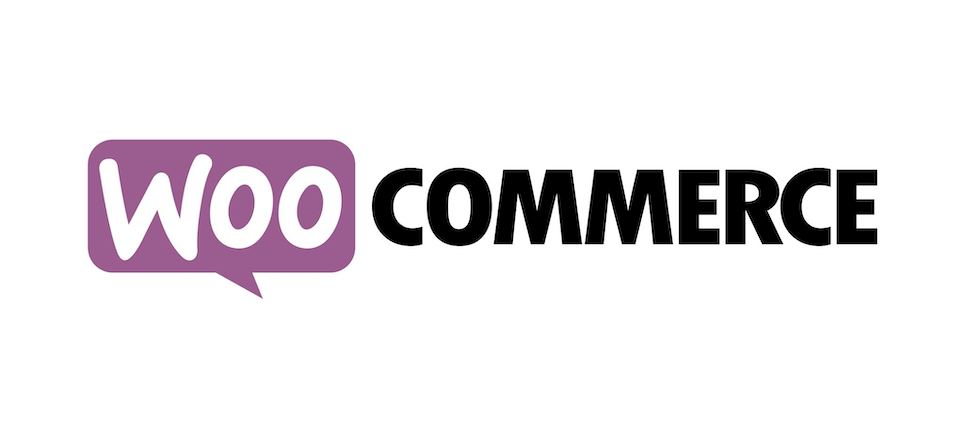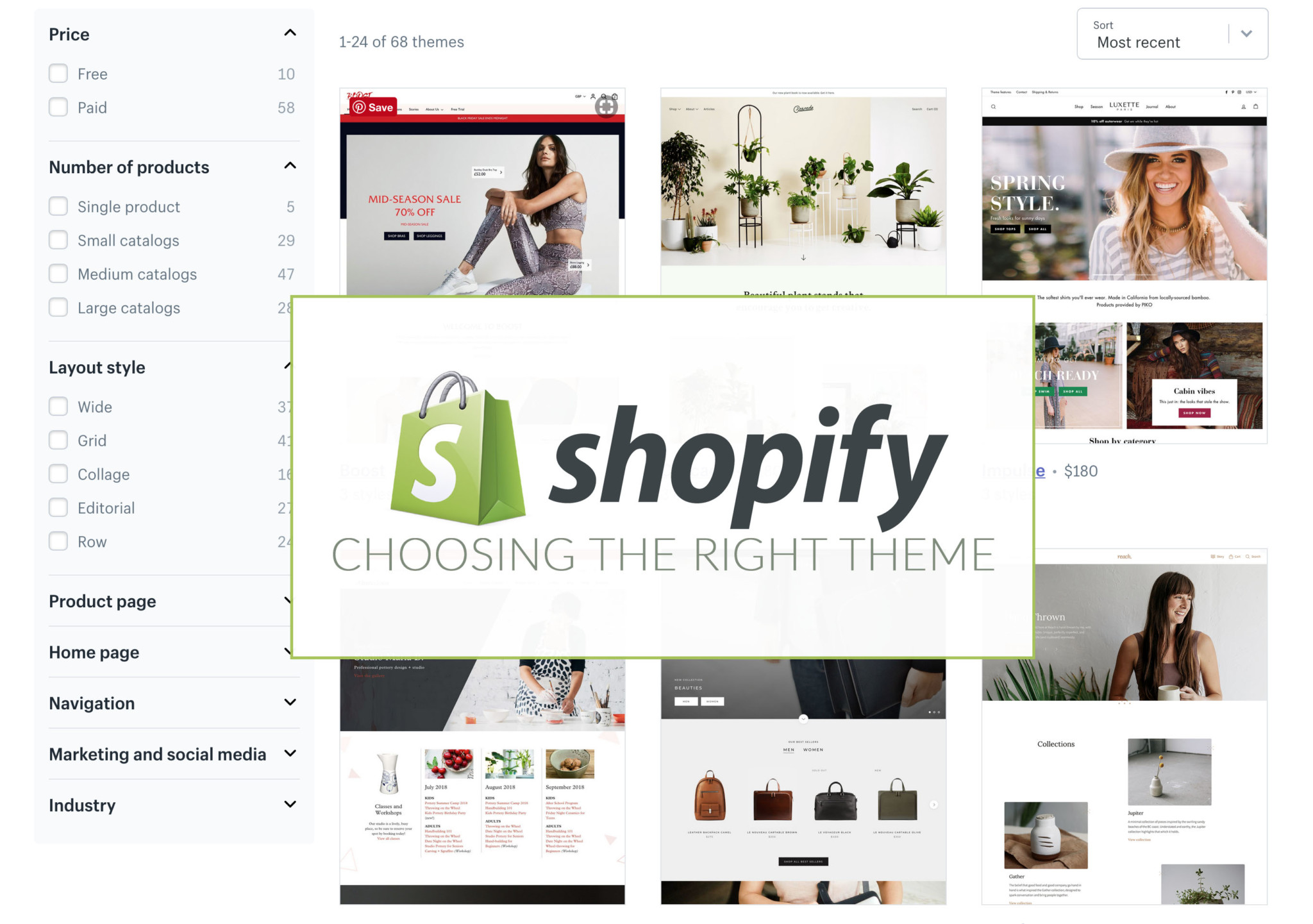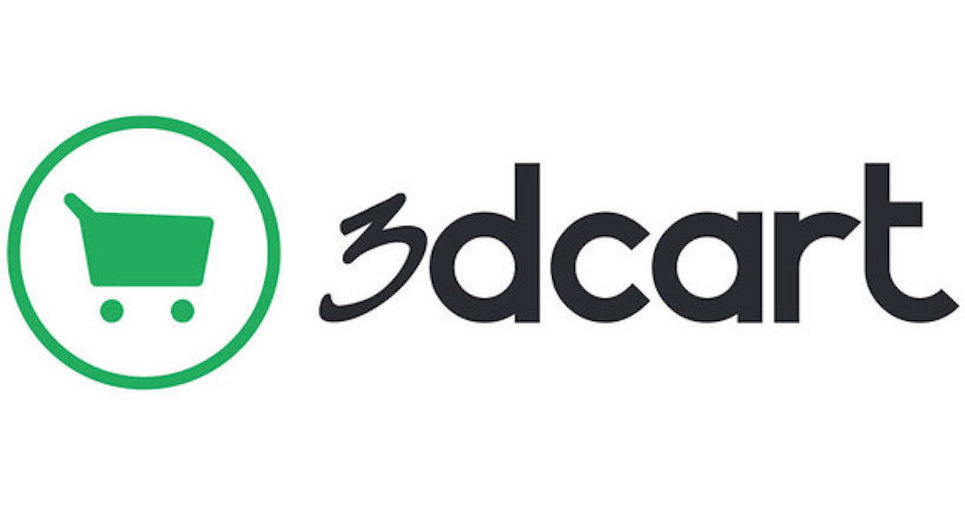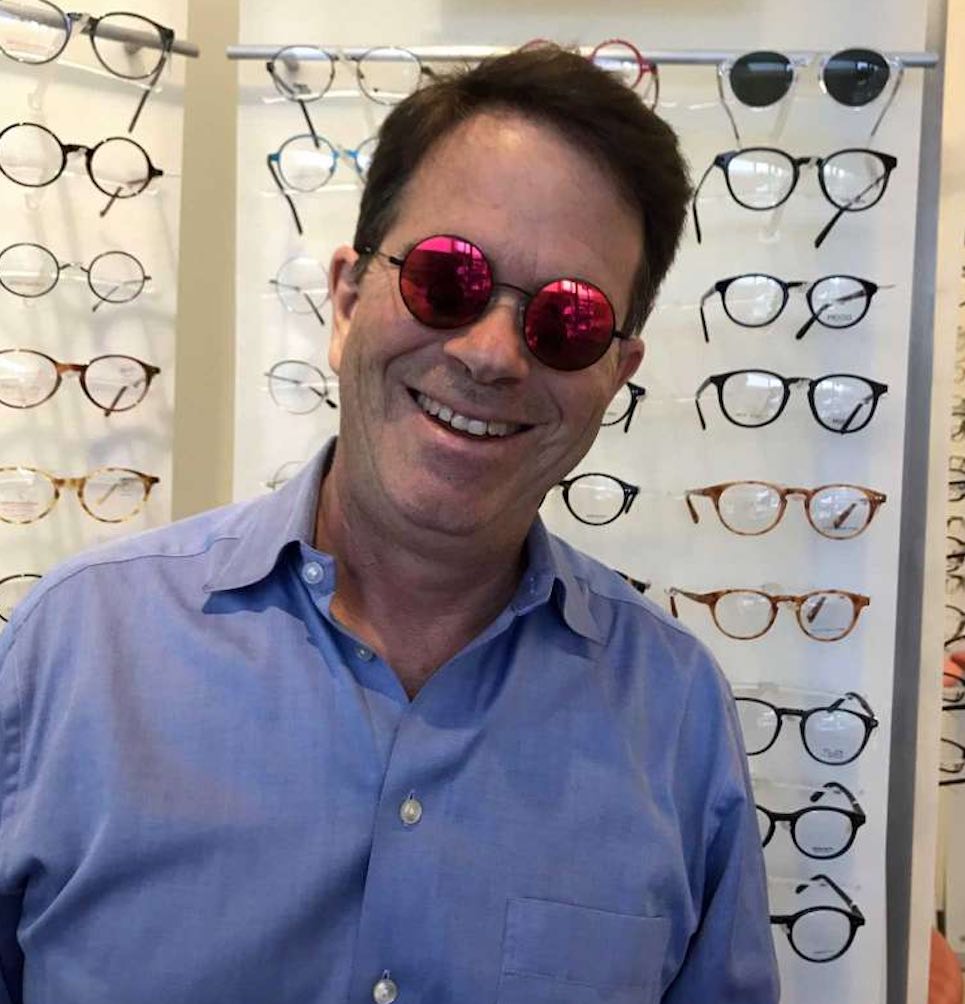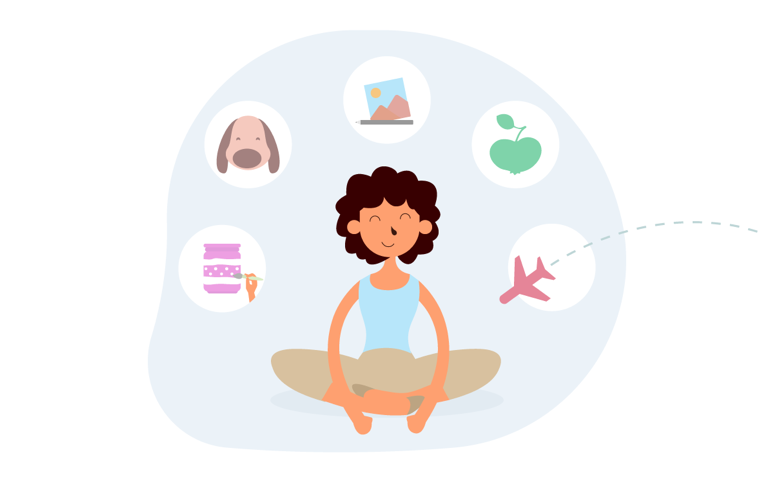Why Lime Has 100 Million Reasons to Celebrate a Greener Urban Landscape
Listen to our exclusive interview with Andrew Savage:
Subscribe to this show on Spotify | iTunes | Stitcher | Soundcloud
Pedalling into the Lime-Light One City at a Time
The business world reads The Art of War over its cornflakes every morning. It takes competition that seriously, so it’s terrified that China is stealing America’s wealth. The business world wants to know if mid-sized companies can really nab a share of Fortune 200 profits and, by the way, can a company survive if its shareholders have stock in rival companies? The business world is not too sure. I mean, is a competitive advantage even possible when globalization is this far-reaching? The business world needs to know because Harvard Business Review doesn’t advise rival companies to join hands and sing kumbaya. Entrepreneurs have secrets, dammit, and if they expose them, all hell will break loose…
… Well… Except for Andrew Savage. Andrew keeps fewer secrets because he thinks direct business rivals should join hands. He’s turned his competitors into collaborators — and they’re marketing his business on this behalf, traditional business practices be damned.
Soaring into a Flooded Market
You might not have heard of Savage’s micromobility company, Lime, but you’ve probably seen its scooters zipping along the streets in your city. Need a first or last mile ride? Just log into the Lime app to find your nearest scooter, then enjoy your sparkling conscience for travelling carbon-free. Lime could have positioned itself as a smartphone-empowered Lyft for scooters or a public transport alternative, but then it would have needed to compete in an already-flooded market. Savage and his partners chose a more collaborative model, and that’s made all the difference.
These days, when you open your Uber app, you’ll find a Lime scooter in your area. Google Maps will give you ride costs, ETAs, and battery range. No wonder the micromobility business has just achieved 100 million rides. It’s scored marketing gold through some of the world’s most powerful brands, then slotted itself into everyday lives by harnessing our favorite digital tools.
The City of the People
Before humankind began wearing its social value as an emblem on the bonnet of its Ferrari, pedestrians ruled the roads. The Walking City of 1890 was a wonderland of horse-drawn carriages and sprawling parks. Ford’s revolution swallowed the landscape in only a decade. Cities were for cars, not people, so national parks shrank. Playgrounds vanished. Sportsgrounds became less common, but the new mobility movement hopes to undo all that change. It’s slowly producing a more walkable city, and Lime is coming along for the ride. Stark raving bedlam is slowly becoming a thing of the past for traffic-jammed cities, and we have a little green scooter partly to thank.
Minding the Gaps
Lime serves 120 communities in over 30 countries, and it’s growing at a staggering pace. That’s good news for the blue planet. The company has prevented 25 million car trips during its short life. That’s more than 9,000 tons of carbon saved, but that doesn’t mean all local governments have welcomed Lime with tea and cupcakes straight away. Scaling a business that comes without codes and sub-chapters requires more than mere strategy. It demands stubborn ambition.
Many cities lack the ordinances for a Lime-served city — a challenge that would chase most entrepreneurs away from the micromobility niche entirely, but not this startup. Lime confronted the issue head-on, helping to draft the Mobility Data Specification and a set of model regulations to serve handpicked governmental partners in every city. Sometimes they were counsellors, sometimes, stakeholders, but they were always passionate about clean transportation. Still, the micromobility niche has required Savage to move in a hundred directions at once, but his experience in the renewable energy industry equipped him for that.

Lime might have eschewed tradition in some ways, but it still sees the wisdom in old fashioned business practices. It has its eyes firmly on its biggest growth markets: cities that are built for pedestrians with high gas prices, traffic densities, and interest in climate solutions. In many ways, its smartest efforts have been in creating a sustainable niche, whether through competitors, governments, or prime locations. The brand has embraced a circular economy in which consumers seek access rather than ownership, and to serve it, it offers simple things: reliability, freedom, and affordability.
The Community-Driven Brand
Tech innovators like Airbnb and Uber scrambled into cities asking for community forgiveness — a move that won them plenty of bad press. Lime decided to ask for permission instead. “At the highest level,” says Savage, “we’re looking to create more just, equitable, and liveable communities.” You can’t help a community by storming in and trampling everything, so Lime decided to prove itself on a small scale before fighting the big guns in New York and Chicago. “Crawl, walk, run,” says Savage, so crawl is exactly what the startup did during its first year. Its willingness to earn trust pushed it ahead of rivals who launched at the same time. The more it walked through pilot projects, the easier it became to get cities to take it seriously. Now it’s running headlong into a cleaner future while competitors scrounge for scraps of the marketplace.
Thinking Big
It’s pedalling towards a carbon-neutral future, but it also wants to change the bread-and-butter lives of humanity. Its scooters, says Savage, give people joy, whether in the form of more family time spent outside of traffic jams or more gas money in the bank. The startup markets a lifestyle, not a product — a value, not a service, so storytelling is a core component of its campaign.
Lime’s company culture lives through the ethics of its founders, so it’s one of the few tech innovators who’ve demonstrated consistent values. Like all social impact niches, the micromobility movement has its detractors, but that’s okay because Lime isn’t finished honing its goals just yet. It’s committed to a 100% renewable energy fleet that will one day include e-vehicles, and it’s constantly rethinking its climate solutions. An evolving social impact business is always just one more step away from achieving perfection, and the world is paying attention.
We also recommend:
Transcription of Interview (Transcribed by Otter.ai; there may be errors.)
Adam Force 0:00
Hey, what’s going on everybody? Welcome back to the Change Creator podcast show. This is your host Adam Force coming to you from sunny Miami. I love these winter months. This is the best time of year for us. I know some of you are struggling with the cold weather. My wife and I were just in New York City. And man, we did forget a little bit just how brisk it can get. But we did miss Brooklyn and Manhattan so we had a good time out there. And so speaking of Miami, I don’t know where you’re from, where you might be listening in from, but around certain cities, you’re going to see scooters.
Scooters are all over the place. And they’re doing these tests to modify, update, enhance urban living, it’s called the micro mobility movement. And then they’re having an incredible impact on the transportation industry and the impact is in social and environmental areas, right? So we’re going to talk about that today with Andrew Savage. So one of the major brands out there is called Lime. So if you’ve seen these scooters, you’ve probably seen a Lime scooter, and they have over 100 million rides on these scooters so far, and the impact is incredible. So who we’re talking to is Andrew Savage. He’s the Vice President of Sustainability, and part of the founding team of Lime.
They’ve raised a ton of money, and they’ve had a huge impact, as I mentioned, over 100 million rides. So we’re going to talk about how do you disrupt the transportation world as an entrepreneur, right? How do you get into this type of thing? It seems so complicated, like so I always want to know how to break into this type of category, get, you know, cities on board and you know, set it all up all that kind of stuff? And also, what does it mean, what’s going on in the transportation industry? I think this is a major area for entrepreneurs to be thinking about. So we wanted to talk about this and what does it mean to climate change as we shift and transition our transportation habits, right?
So this is a pretty awesome conversation I’m excited to have and share with you guys. So if you missed last week’s release…actually, we didn’t do one over the holiday. I’m lying. We didn’t do one over the Thanksgiving holiday. The one before that was with me and Amy. We did a discussion on why your online sales might not be you know rocking and rolling the way that you hoped. So there’s a lot of valuable nuggets in there so hopefully you got a chance; you can check it out. If not, go back you can have a listen to that conversation. I think you’ll get some good nuggets out of it. All right. And last but not least, don’t forget to stop by changecreator.com. We have a ton of fresh content up there for you all to check out and follow us on Facebook, guys. We do a lot of good content on there. And if you want to get serious, we have our Facebook group, the Profitable Digital Impact Entrepreneur, you can find us there. Alright, let’s get into this conversation with Andrew.
Announcer 2:56
Okay, show me the heat
Adam Force 3:01
Hey, Andrew, welcome to the Change Creator Podcast Show. How you doing today, man?
Andrew Savage 3:05
I’m doing great. Thanks for having me.
Adam Force 3:07
Yeah, I appreciate you making the time. I know you are super busy. And just looking at all the things you guys have accomplished. You’re a bit of a baller. So I’m really interested in digging into how all this came to be. So if you could just tell me a little bit about just what’s going on in the world of Lime today. What are the most current events? What’s happening with you guys?
Andrew Savage 3:30
Yeah, sure. Well, thank you. Again, it’s great to be on the show. And, you know, we have a lot going on. I think a couple things that we’re most focused on right now is both expansion around the globe, we now serve over 120 communities in orver 30 different countries. And at the same time as expanding, really focusing on our business, on profitability, and improving product and hardware. So when we’re moving, we’re always moving quickly in a bunch of different directions. So it’s a complicated business because you really can’t afford not to be moving in a lot of different directions at once.
Adam Force 4:09
Yeah, yeah. Interesting. So let me…so now let’s just give a little bit of background how you got there. Right. So all this exciting stuff. What were you doing before Lime and what was the epiphany or the transition to Lime?
Andrew Savage 4:24
Yeah, so I had my sort of earlier part of my career I had worked in government and politics and environmental policy and energy policy. And coming out of that and experience working in Congress where I realized we weren’t going to get as much done on the climate crisis or on other challenges that I had felt like we urgently needed to address. I shifted to the renewable energy industry, and spent six years in solar and wind development.
And really an amazing experience both understanding project development, understand the implications of how to grow a business and scale a business. And in many ways the transition to transportation with Lime was a natural one because I had spent that period talking a lot about and thinking a lot about how do we electrify our transportation system? How do we make transportation cleaner? It was one thing to be doing solar for a home. But it’s another thing from a climate perspective to be shifting our economy to run on renewables.
Adam Force 5:26
Yeah, yeah, it’s true. And you know, I always look at cities you know, I love New York. I lived in New York, I lived in Philly for six years and all that stuff and I always look at things I’m like, you look at historical design and I’m like, some of this is just not good design for you know, what we would look for today when it comes to sustainability and you know, whether it’s the transportation you see all the cars the congestion and all this kind of stuff. So you start thinking about these, you know, scooters and I guess you guys call it. What is it? Micro mobility, right?
Andrew Savage 6:00
That’s Right. Yeah.
Adam Force 6:01
I love that. And you know, we just started seeing all these lines of scooters and this whole movement taking place. And it seems like you’re almost like you said, you’re creating a shift and it’s almost like a cultural shift in transportation, right?
Andrew Savage 6:16
Yeah, I mean, it really is. And I think you raise a really good point that I don’t think a lot of people think about the cities that they live in today, as having evolved over a very short period of time as quickly as they did when the car was invented. So not much longer than 100 years ago, there were no cars in any city around the globe. And we in a matter of a decade or two, cities were transformed into car centered communities. That meant you lost parks, that meant you lost space for the community and that you lost stickball in the street, all kinds of you know, vestiges of the past.
And I think when you look at communities today, it’s very hard to see what the future could look like when you project what you want to see them be. And so, you know many ways, I think micro mobility and what we’re up to with scooters is sort of the pointy spear among other changemakers in this space because we’re really trying to envision the city of the future at the same time as we’re deploying programs in cities of the present.
Adam Force 7:23
Yeah, yeah, I love that. Yeah, I always thought about like public transportation systems and all these different things that would be helpful. Like, I always thought about cities being more circular like so things can just easily go in a circle, like a train. And so when I see the you know, micro mobility movement that you’re part of, I just find it so much more flexible. It’s just easier, it’s more affordable. I mean, there’s so much benefit, and I love walking around the cities but sometimes you know, it’s 90 degrees out and after I just get on a subway or I have to walk 10 blocks, I’m going to be a sweaty mess when I get to work. So yeah, scooter’s a lot easier for sure.
Andrew Savage 8:05
Yeah. I mean, I think what you’re… I think that’s exactly right and the business proposition that we started with as a company was, was when the industry was essentially called dockless bikes or scooters hadn’t even been invented yet. But this was just two and a half or three short years ago. And the premise was that the freedom and flexibility of not having to go to a docking station, which was the traditional model, in shared mobility, would free people up to use the product more. And we’ve actually seen that. And people love the flexibility that will get from point A to point B, without a restriction on what that point B looks like, which is, frankly, that’s how people operate, right? You don’t plan your day, generally around where a docking station is for shared transportation. And that’s the premise that we’re operating under and the freedom and flexibility that we have.
Adam Force 8:57
Love that and that’s the number one reason I never use the bikes. I was like, I’m not going to go hunt down some docking station. But the scooter, it’s like, oh good, boom, you just go wherever you got to go, you leave it, you’re good to go. So that’s a huge step forward. And it kind of leads me to just start thinking a little bit of like, when Lime was ideated I mean, you look at this as a younger entrepreneur, and you’re thinking about business and getting into a big space like this, it’s kind of daunting. And I feel like there’s a lot of complex, you know, barriers to get around. So what have been some of the bigger challenges in getting Lyme started?
Andrew Savage 9:38
Yeah, I mean, I think one point I’ll make is, I think there’s an important element that you can’t know everything and if you are someone who wants to be able to dot every I and cross every T and have surety in your decision, it’s pretty hard to be launching into something like a new space, a new business, a new venture like this. You sort of have to throw some caution to the wind, and, and trust. And I think part of that trust is also knowing that you’re entering a space that you really care about, because I think that gives you a lot of ability and energy and latitude to, to put both, you know, to jump in with both feet and dive in. You know, so I think that’s sort of one of the basic premises that I would share that feels key to me.
I think the big challenge is, really, to get to your question more, because it was an unknown space, the Government Relations and sort of marketplace that we were operating within was a big unknown. That happens to be my background. I certainly love the challenge of this. But we were essentially asking communities to accept us as a business in a case where they didn’t have regulations on the books. They didn’t know what to do with our business, right?
They couldn’t look at some code or some sub chapter within there, you know, you know, within their city rules and say this is where you fit in; it was different for every single market that we went into. The second thing that we also ran into and the challenge that we had was in an era where you had Uber, Airbnb, other tech innovators that went into cities and asked for forgiveness rather than permission, cities were on alert, and they did not want to see businesses or see dockless, you know, bikes or scooters, enter communities without more of a partnership. And so we very quickly established a practice and really a mission of working with cities in a collaborative way, which I think has clearly served us well.
Adam Force 11:47
I mean, who do you even start talking to in the cities? Where does that even…the conversation begin?
Andrew Savage 11:54
It really varied from city to city. I sort of laugh here because one of very first communities was in South Bend, Indiana — Mayor Pete, who’s now obviously running for president, a great innovative leader. But I think it really varied market by market. Sometimes we found a city councilor was extremely passionate about mobility and transportation. Sometimes we found the mayor wanted mobility and transportation, sometimes we found the Department of Transportation director. So it really was a matter of finding a key stakeholder within the community that could be an advocate for us, that could help us navigate entering the community in a way that was productive for both the community and for us in the business.
Adam Force 12:37
Gotcha. Yeah, that makes sense. And I guess that leads me to be curious about you know, there’s a lot of people where it’s like, Great, now I can go hustle and find, you know, a city councilor, whoever that might want to…I might be able to get their ear, but what did you need in place already for them to take you seriously?
Andrew Savage 12:58
Yeah, you know, I think it was a commitment. Well, I think what we, what we learned very early on was we were not going to be taken seriously by New York City, Chicago, Los Angeles, you know, the big markets that we all wanted to be in from the get go. We had to be willing to start small and have some test markets or some pilot markets, where we proved ourselves. And we had some very good advice from the former mayor of Philadelphia, and I remember sitting in the boardroom with him or conference room, and he said, crawl, walk, run.
He repeated it: crawl, walk, run. And what he was urging us to do was to do that crawl thing first. And that meant going to smaller communities that might not have had the unit economics that we wanted. But were markets where we can prove ourselves and markets where we could demonstrate and build a trust, that we were a business that was worth doing business with. And that was incredibly important advice, and I think was why we were successful among our…compared to other competitors that may have started doing similar things at a similar time.
Adam Force 14:04
Ah, yeah, no, that makes sense. So, finding marketplaces that will give you a chance. And I mean, I’m curious…now you guys have raised quite a bit of money. And I can understand why — this is a big operation. But like you said, you start by crawling. So where’s…how many rounds have you guys raised at this point? Do you know?
Andrew Savage 14:23
We’ve raised four different rounds. [Unintelligible]
Adam Force 14:28
Okay. Wow. So, so the first round got you started? And I think at this point, you’re over $700 million in funds raised for the full operation that you have now, right?
Andrew Savage 14:39
Yeah, that’s right. I think it is definitely a capital intensive business. And so, you know, we were essentially raising money, almost non stop. So every six months or so, on average, we were closing a round. And I often would, you know, talk with, you know, city leaders and others about this. And, you know, we weren’t raising money for the sake of raising money. We were raising money because it allowed us to scale good programs; it allowed us to invest in hardware; it allowed us to be as strong as city partners we possibly could be, and build a team so that we could deploy programs in markets and serve them well. So, you know, often, you know, I think in Silicon Valley, there’s a badge of honor in how much you raise. I think of it more about just being able to serve the community that we’re committed to serving.
Adam Force 15:27
Yeah, I think that makes a lot of sense. And, you know, for an operation like this, I it sounds like, you know, you definitely need to raise some funds. I can’t imagine just trying to do it, you know, organically yourself, which probably wouldn’t be possible to even test the market. There’s going to be overhead, just creating the equipment and all that other stuff. So was there a lot of regulation that you had to sort out in order to get this thing like initially launched?
Andrew Savage 15:54
Well, yeah, I think as I mentioned, like the regulations within each city were incredibly complex. In fact, one of the early things that we did was create a model regulation, because they simply didn’t exist. And I remember, you know, typing that out and thinking, what do we want to abide by? What standards can we live by? What standards make sense to the industry? So that we can hand that piece of paper over to a city and say, Hey, we don’t know this, you don’t necessarily know this either. But let’s start somewhere and I think it was that type of work that allowed us to scale and grow into markets as quickly as we did.
Adam Force 16:29
Yeah, yeah. I think that makes sense. You know, and we’ve seen it grow a lot here in Miami. There’s just a ton of people using the scooters and that’s funny when you first started seeing them pop up we were like, What what’s going on here? How does this work? What is this? And you know, it’s just it was just all of a sudden you see him sitting on the sidewalk and now today I mean, people are buzzing around on these scooters all over the place. So how has your…the adoption been and feedback from people? What’s that been like now that you’ve been in the market, testing for a bit?
Andrew Savage 17:04
Yeah, I mean, so we’ve now achieved over 100 million rides across the globe, certainly an accomplishment that I never would have expected three years ago to have made. I think, what is humbling, what is inspiring, what gets us all up every day, working as hard as we do is the impact that we’re having on communities. You know, I think some of the statistics around who our users are is most interesting. One third of all of our riders make $50,000 or less. So we’re not talking about just folks in Silicon Valley that are on scooters. This is a real world service that people are depending on to get to and from work, to get to school, to get, you know, over to daycare to pick up your kids and, and there’s a real value in that and I think that’s inspiring to all of us.
In addition, you know, again, there’s a fair amount of gender and racial diversity as well: One third of all of our riders are also people of color. So what we’re hoping to do is be able to serve communities and provide a service that covers the gaps, that helps people get to and from public transportation. That was what we call sort of the first and last mile, which is a challenge that cities have faced across the globe for decades. And so, you know, that’s what gets us excited. I mean, there’s of course, a whole level of environmental benefits, which we can chat about, but the users and the adoption have been quick, diverse. And it’s amazing to see the joy that people have when they hop on a scooter the first time and you can see why it’s taken off because people just love it.
Adam Force 18:48
Yeah, it’s fun. Well, I love the human benefits for people, it’s probably be saving a lot of money for them and making it easier for them and giving them more reliable transportation to get around. So let’s definitely touch on the environmental because now you got benefits to people, but also the environment. And I love, you know, something we talked a little bit just about how this is contributing towards the climate crisis and shifting ourselves away from cars and things like that. But maybe you could tell us just a little bit more what this means to you guys that line when it comes to the environment and what you’re seeing or what your goals might be with it.
Andrew Savage 19:28
Yeah, sure. I mean, you know, at the highest level, I mean, we’re looking to help create more just, equitable and livable communities. And, you know, there are going to be 2.5 billion more people living in cities across the globe in the next 25 to 30 years — 2.5 billion people that these cities are really not well equipped to host or to move around. And so, you know, we see our solution as being part of a myriad of solutions that are necessary in a lower carbon world. So, you know, our scooters are all electric, they are charged on renewable energy no matter where in the world they’re being charged, we buy renewable energy to charge those scooters. Because we feel so passionately that a carbon-free future is going to be critical for this planet. And so as we think about how those 2.5 billion people are going to get around, we’re also thinking every day about how can our service be more sustainable and be in constant improvement to meet that challenge that we have as a globe?
Adam Force 20:32
Yeah, yeah. Is there anything statistically — and you may not have this on the top of mind but just curious, for example, — like how much like…if you had a certain number of scooters…like you mentioned 100 million rides. What does that mean for the carbon footprint — meaning like, you know, is that equal like taking off a certain number of cars off the road? Like, is there anything top of mind like that, a comparable?
Andrew Savage 20:59
Yeah, yeah, I appreciate that. I appreciate that you asked. There are a few — there number different ways that we can sort of slice and dice that. But I’ll give you a few examples. So in the hundred million rides that we’ve, we’ve served as a business, 25% of those have prevented a car trip. And we know this through user surveys that we do. We know this through user surveys that cities do. So the cities often corroborate our numbers. You don’t have to take my word for it. So if you take 100 million rides that we’ve served, and now we’re well over that, that’s 25 million car trips that we’ve reduced or prevented, and that equals around over 9000 tons of carbon saved.
That’s also the equivalent of running a car around the earth 100 times consecutively. So a pretty long car trip. So you know, and then maybe to dial down into a specific city, one of our biggest markets in Paris. We’ve served enough rides in Paris alone to have now over two car-free days in Paris. So if you picture Paris going two 24-hour periods without a single car driving on the street, it’s a pretty big impact and in my view, and I think as any anyone in business would hope we’re just getting started here I think, you know, we just hit our hundred million ride milestone but we’re already obviously looking out towards what do the billion rides look like and when do we get there?
Adam Force 22:27
Yeah, I love that. So, I mean, I remember I was going through the websites and I know you guys have multiple websites. Do you guys have this stuff plastered all over telling these stories?
Andrew Savage 22:40
Candidly, probably not as plastered as we should. I think with any business that’s growing as quickly as we are there’s a you know, competing of priorities and our competition of priorities and we can’t do it all. I think candidly, we can probably do a better job of telling the story and I think often, we have too many stories to tell. Often, we are, you know, we sort of have an accomplishment, but then we move on to the next accomplishment. So, you know, candidly, I think it’s an area where we should be doing more. And I think the impact really speaks for itself when we’re able to tell those stories.
Adam Force 23:17
No, that’s incredible. I really love what you guys are doing. And I’m excited about it as a cultural shift and the contribution towards…
Andrew Savage 23:25
Thank you.
Adam Force 23:25
Yeah, the environmental stuff and how it…I mean, even…I didn’t even really think about it as much towards the way it helps people. But really making people’s lives easier, giving them more — a better option for getting around, saving money. Like it just…I can see how people will start to rely on this regularly. And it’s nice because of that flexibility. I can look at my app, I can see where the scooters are. And I, you know, I can go and jump on one. It’s really as simple as that, which is pretty cool. I mean, it takes like two seconds to get on this thing and get going.
Andrew Savage 23:56
Yeah, I mean, it’s something that we really couldn’t have done in an earlier era where a smartphone wasn’t so accessible. But, you know, now just under two thirds of our riders ride regularly to get to or from work or school and so to your point about regular use, I mean, two thirds of our riders are using it as a sort of daily utility school, work, daily habit, is really how you create a business that makes lasting change and it’s why we are so laser focused on our riders and also more communities that we can serve.
Adam Force 24:35
I can just imagine, I mean, I can see…like, you ever see like the Humans of New York and the stories behind them? I can see people telling their stories on how this has made…like it’s as simple as a scooter but the difference that can really make in making someone’s life just way easier. So that could be pretty cool.
Andrew Savage 24:55
Yeah, I often think about that sort of story and like being able to, you know, follow the daily user that, that, you know, might use it to get to work, but then might use it to go, you know, get, you know, take a scooter to the doctor’s appointment. And, you know, the time that it saves. I mean, we all know that people spend an enormous amount of time stuck in traffic. We also know that, you know, people own vehicles that sit idle 96% of their working life, right? That isn’t a very good use of money or capital, right? So it’s the worst investment that we often, too often make, right? And most of us don’t want to have to make that investment in the car.
And so to the extent that we can help move that needle and change the way people live and provide a utility that gives them either joy, give them more time to spend with their kids, gives them more money…I mean, all those things are in addition to the environmental benefits, which are critical, but those are real world things that people live and breathe every day. And so while sometimes it can be easy to overstate the environmental benefits, the social benefits are really significant. And I think often, you know, you maybe governments and others don’t put as much value on that, because sometimes there isn’t a financial value per se, but when you break it down, there really is.
Adam Force 26:15
Ultimately, yeah, I think there ultimately is. And if you think about there’s values outside of financial that are important meaning every time my wife and I…we have one car because we live in Miami, so we have one car because she does have to drive a bit outside to the University of Miami. She works at the hospital. And so every time we get in the car, though, let’s say we’re doing some weekend errands. Sitting through the traffic in the city and just getting to places — there’s not a time that goes by that we don’t sit there and say, God, I hate driving. I hate driving and sitting in this traffic.
And then what happens? Somebody honks on their horn, which means the next person catches… it’s like it’s like a virus that catches on and everyone starts feeling this frustration and you have this bad energy. Everyone’s angry, everyone’s pissed off. And I feel like we can start getting rid of that anger from people by getting people out of the car. So I love that benefit as well. And the other thing I was curious about as you’re talking, and I’m sitting here thinking, I’m like, Well, I wonder what would happen when you try to get into a city like New York because they have like, you know, Miami, we don’t really have a good public transportation system here. So the scooters are perfect. But you know, subway, kind of the subways in New York are thing that the MTA is…it’s like a big thing for them. And I’m sure you know, there’s a lot of money behind it. So how do you foresee that? Like, is that going to be a challenge? Because it’s going to compete with the subways?
Andrew Savage 27:43
Yeah, it’s a good question. I mean, we very much view ourselves as complimentary to public transit, because if you think about the benefits of public transportation, is it’s bringing people often more than a mile, right? You’re taking a train, you know, two to three miles, you might be taking a bus three, four or five miles, etc. What we really see our services doing is bringing people to public transit, or from public transportation. So if you, you know, go to Oakland, for example, where you see people grabbing scooters all the time — they come out of the BART station, they hop on a scooter, and they get that last, you know, that last connection or last mile to work
You know, we’ve actually done a really interesting partnership with Google Maps, which I’m really excited about because it allows people to go on to Google Maps and see how they can use public transportation plus a scooter — a Lime scooter — to improve and speed up their commute. And that’s I think, when you really change hearts and minds when you can, you know, integrate yourself into people’s daily lives or, or really importantly, change behavior, right? So you might go from thinking, Man, that bus trip or that train trip is going to take too long because I have to take, you know, two different lines or, you know, I can’t get there in time to being able to hop on a scooter or take a scooter from the train station, and speed up that trip. And so that’s to me really exciting when we can be a compliment to public transportation. And I think important for the cities that we serve, support the public transportation investment by bringing more people to them.
Adam Force 29:25
Yeah, you know, that’s a great point. And I want to call that out for anybody listening. Because when you’re thinking about your business, and you’re thinking about partnerships, like I always say, it’s not about competition, you’re not there to compete with other companies. You want to be collaborative, right? Cooperation has been more powerful than anything in this world. So that whole positioning that you had, which is we want to compliment the public transportation system. And that made sense to me. And as soon as you mentioned Google, and that partnership, the light went off,.I was like, Oh crap, that makes a lot of sense now because when you type in, “What what does it take to get there?” and if it includes now the scooter option? That is… I mean, it doesn’t get any better than that. That’s beautiful.
Andrew Savage 30:08
Here’s another interesting one. Since you like that one, I’ll give you a second. So speaking of competition, I mean, one of the businesses that we actually compete against the most or the services that we compete against the most is ride hailing. Because if you’re in a city and you want to, you know, go down the street, a mile, your options often are take a scooter or ride hail. And we’ve actually — and part of that [unintelligible] that I mentioned that has allowed us to save 25 million rides is because a significant number of our riders are choosing to take a scooter over hailing a ride on their app.
And we’ve actually partnered with Uber and within Uber’s app across the globe, you can actually see Lime scooters as an alternative to taking Uber vehicles. So in addition to that partnership with Google, which helps you form your way from public transportation faster, you can actually choose to spend less money and often move faster through a city by taking a scooter instead of taking an Uber ride. And that actually only further supports the mode shift from vehicles, which are often carbon emitting to renewably powered scooters that we’re trying to make. So there’s really a double win there of bringing more eyeballs to the surface, but also saving on carbon as well.
Adam Force 31:33
Yeah, yeah. Now that’s great. I love that. I mean, the Uber thing is great, it’s convenient. And, you know, I just…but there’s just more benefits to the scooter. Now, can you have a family of four jump on a scooter? No, but I think that for most couples, and people just going into work and doing all these things like it’s just such a good flexible option. So I’m just happy to see them growing and getting a lot of use. I was curious if they would be adopted by people and they definitely seem to be having a pretty big uptick and a hundred million rides is, is really impressive.
Andrew Savage 32:12
We’re also finding that in Europe, which is one of our biggest growth markets, the European Communities are even more inclined than North American communities — not to say that there isn’t a significant amount of growth in North America, but European cities are… they’re built and designed for pedestrians, they have higher gas prices, they have higher density. And there’s also a really high premium more interest in climate solutions there so we’re actually finding extremely quick adoption as we look outside of North America across the globe.
Adam Force 32:47
Yeah. Yeah, that makes…that’s great. And you know, as you were talking, something else came to my mind that’s just another huge benefit. And I’ve always said this to my wife, I was like I you know, we have this capitalist model where we have to buy, buy, buy which means people have to make more, sell more. And it’s just this infinite loop. And I’m like, well, this, it’s not people don’t want to own anything. They only…they just want access to things and what you guys are offering is access without ownership. And I think that is a very important part of the future.
Andrew Savage 33:21
Yeah, it’s a really good point. I mean, there’s the evolution of the folks embracing the circular economy is, I think, a really pertinent one for our business. I think, you know, Ellen MacArthur Foundation has some leading work on this for those listeners who are interested, but, you know, they raised the question of when you need a hammer, is it the hammer itself that you need or the service that the hammer is providing, right? You’re trying to hit a nail, right, to boil it down to one of the most basic or common elements. It’s the service, right? And so our goal with shared transportation is to prevent people from having to own, own, own, and continuously accumulate things, but have a service, have a service that’s convenient to them and have a service that is there when they need it that’s reliable and that provides…it provides an efficient, affordable way to get around. And so, to me, you know, embracing that circular economy element is so critical to our business, I think if it’s shared transportation, so well.
Adam Force 34:24
100%. I mean, we’ve been doing it for a long time with libraries, like you just need the book to read, learn the information, then you don’t need to keep the book forever on your shelf. You know, like nobody wants to own a million CDs with CD cases, they just want the music.
Andrew Savage 34:39
I think about my parents all the time because they were just avid, avid readers, and were always getting books from the library. And while I profess that I do not have enough time to read these days, I’ve got two young kids at home and obviously Lime takes up a lot of time. I just think about them and their you know, embracing of the community and a shared service, which is the library and I think you raise a really great point that we don’t all need to own everything at the moment that we need it. I think, in an economy where absolutely everything is for purchase on the tip of your fingers, literally now, it can become too easy to consume. And I think it’s exciting to be able to think about ways where you can consume in a way that is more sustainable, that has a lower impact on the world.
Adam Force 35:26
Yep, that’s perfect. I love that. So we’re going to wrap up, I want to be respectful of your time. But the one last thing I want to ask and I’ll just ask for this as a heartfelt answer from you is, you know, what is something…if you had everybody…the world’s ear, — I ask this randomly to some people — and if you had the world’s ear, and you could tell them what you believe is the most important message, I mean, what would you want to share with people?
Andrew Savage 35:57
You know, I would say that people need to be involved in the decision-making in their communities. And I know that politics can often be seen as a third rail, you don’t bring it up. But I come from a political background. And having been now in two businesses where regulation, policy, politics are at the heart of our success, of our growth, of our deployment, I just think it’s so critical that people often are saying to me, Hey, why don’t we have scooters in this city or that city? Or why don’t we have more scooters in this city or that city?
It comes down to community engagement. And we have done very well, in cities where the community is saying we want this and we need the service and we want more of it. And I would just say that to your question, being engaged in — whether it’s scooter policy or something else that you’re passionate about, I think is just so critical. I think it makes our communities work. I think often people don’t think that they can have an impact. But having been on the other side where I served in government, you can have an impact with very few number of voices. And so I think that would be my sort of parting thought.
Adam Force 37:11
I love that. Yeah, get involved, take action. I think people get too comfortable behind the computer on Facebook, just thinking that like is going to do something.
Andrew Savage 37:21
It really doesn’t take…it does not take a lot. I mean, I will tell you that a city councilor that hears from five or 10 people takes notice; a mayor that hears from 10 or 20 people takes notice, and so it doesn’t take much to move the needle. So it doesn’t take many friends to move the needle. So you know, take those likes on Facebook and, you know, pull people together and ask for something that you’re looking for to make your community stronger.
Adam Force 37:44
I think that’s a great insight is that, you know, 10 people that reach out to the mayor, the city councilor, like they’ll start paying attention. So when you see things about call your city council or call, I mean, that stuff is real. So that’s…they want to hear from you and if you sit there and think, well, it’s not going matter if I call, you’re wrong, right? So that’s a great point. I love that. Alright, well listen, let’s give a shout out. What’s the best place for people to learn about Lime?
Andrew Savage 38:12
Our website li.me or you can check us out on various social media handles as well.
Adam Force 38:19
Awesome. Appreciate your time, Andrew and look forward to seeing more in the future from Lime.
Andrew Savage 38:24
Thanks a lot, Adam. Appreciate you having me on.
Announcer 38:27
That’s all for this episode. Your next step is to join the Change Creator revolution by downloading our interactive digital magazine app for premium content, exclusive interviews and more ways to stay on top of your game available now on iTunes and Google Play or visit changecreatormag.com. We’ll see you next time where money and meaning intersect right here at the Change Creator podcast.









